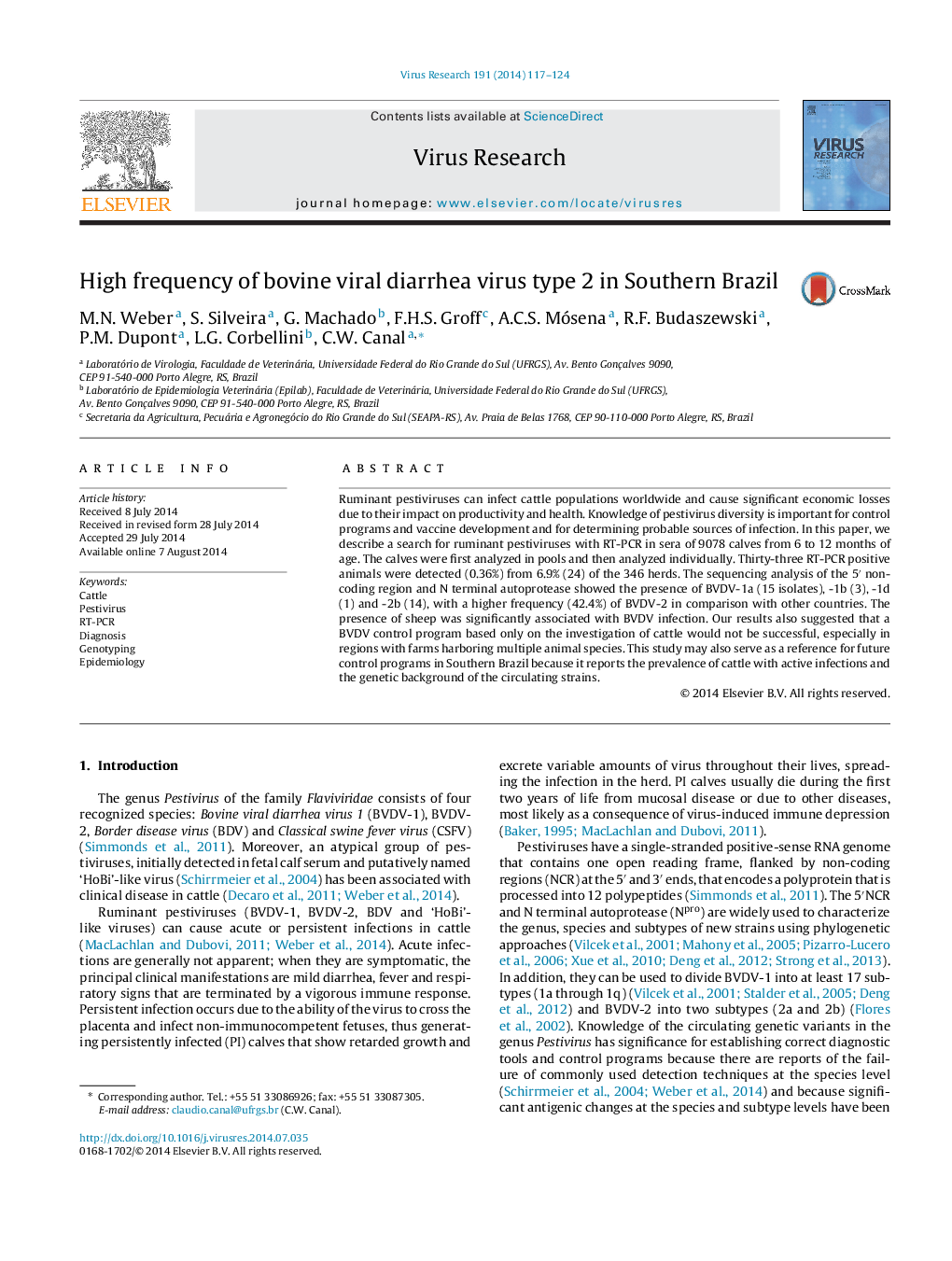| Article ID | Journal | Published Year | Pages | File Type |
|---|---|---|---|---|
| 6142351 | Virus Research | 2014 | 8 Pages |
â¢We perform the search of ruminant pestiviruses in Brazil.â¢The prevalence of active infections was generated.â¢We assess the risk factor of infection in herd level.â¢We perform the genetic characterization of pestiviruses detected.â¢This study may also serve as a reference for future control programs.
Ruminant pestiviruses can infect cattle populations worldwide and cause significant economic losses due to their impact on productivity and health. Knowledge of pestivirus diversity is important for control programs and vaccine development and for determining probable sources of infection. In this paper, we describe a search for ruminant pestiviruses with RT-PCR in sera of 9078 calves from 6 to 12 months of age. The calves were first analyzed in pools and then analyzed individually. Thirty-three RT-PCR positive animals were detected (0.36%) from 6.9% (24) of the 346 herds. The sequencing analysis of the 5â² non-coding region and N terminal autoprotease showed the presence of BVDV-1a (15 isolates), -1b (3), -1d (1) and -2b (14), with a higher frequency (42.4%) of BVDV-2 in comparison with other countries. The presence of sheep was significantly associated with BVDV infection. Our results also suggested that a BVDV control program based only on the investigation of cattle would not be successful, especially in regions with farms harboring multiple animal species. This study may also serve as a reference for future control programs in Southern Brazil because it reports the prevalence of cattle with active infections and the genetic background of the circulating strains.
